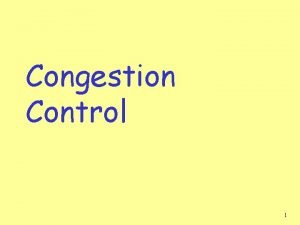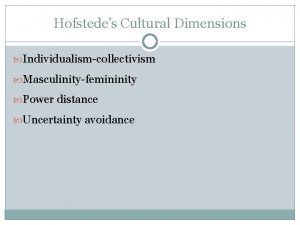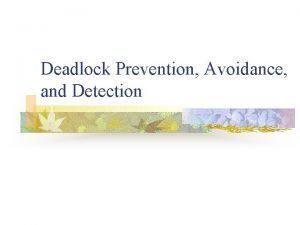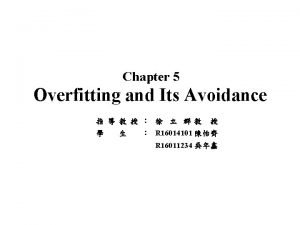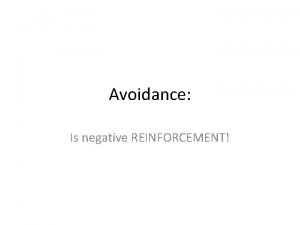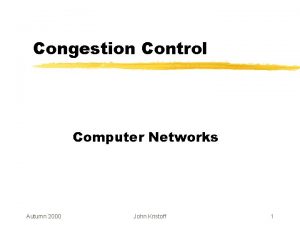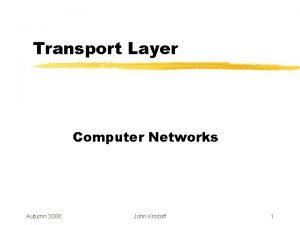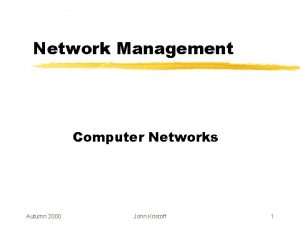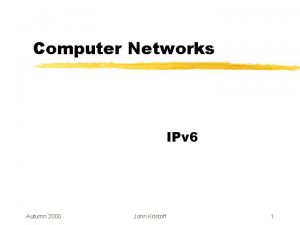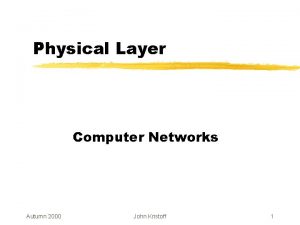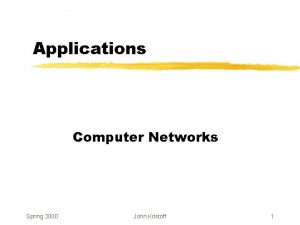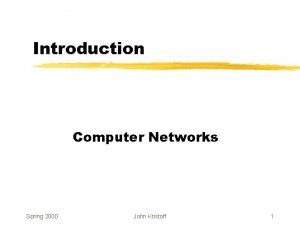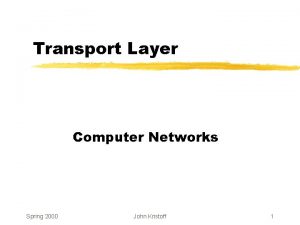Computer Networks Congestion Avoidance Autumn 2000 John Kristoff












- Slides: 12

Computer Networks Congestion Avoidance Autumn 2000 John Kristoff 1

Recall TCP Sliding Window Operation Autumn 2000 John Kristoff 2

Important Terms Ñ Maximum Segment Size (MSS) Ñ Window Ñ Retransmission Ñ Timer Ñ Delayed ACK Ñ Duplicate ACK Autumn 2000 John Kristoff 3

Congestion Window Ñ Sender based flow control Ñ Sender uses min(cwnd, advertised window) Ñ Tranmission window Ñ Detect network condition and adjust Ñ Use timers, ACKs and network feedback Autumn 2000 John Kristoff 4

Retransmitting Segments Ñ TCP starts timer after sending a segment Ñ If ACK returns, reset timer Ñ If no ACK, retransmit and increase timer (2 x) after resetting Autumn 2000 John Kristoff 5

Round Trip Time (RTT) Ñ TCP measures RTT and uses RTT to calculate timer values Ñ If ACKs returning quickly, timer values are kept low Ñ Retransmit quickly when throughput is high Ñ Allow time for ACK to return when throughput is low Autumn 2000 John Kristoff 6

Slow Start Ñ Initialize cwnd to 1 MSS Ñ Increase cwnd by 1 MSS for every ACK Ñ Not very slow! Autumn 2000 John Kristoff 7

Congestion Avoidance Ñ When packet loss occurs, TCP must slow its flow of traffic Ñ When retranmission timer expires, save value of transmission window * ½ (ssthresh) Ñ If congestion occurred due to a timeout, set cwnd to 1 segment Ñ When data is ACK'd, increase cwnd via slow start up to ssthresh Ñ Thereafter increase cwnd by 1/cwnd for each ACK Autumn 2000 John Kristoff 8

Congestion Avoidance Illustrated Autumn 2000 John Kristoff 9

Fast Retransmit Ñ If > 2 duplicate ACKs are received, a segment was probably lost Ñ Sender assumes enough time has elapsed for out of order segments to have arrived and assembled Ñ Retransmit segment without waiting for a retransmission timer to expire Ñ Enter Fast Recovery Autumn 2000 John Kristoff 10

Fast Recovery Ñ Sender has to assume data is still flowing due to the reception of duplicate ACKs Ñ Loss was probably a rare or temporary event Ñ Do not go into slow start, just go into congestion avoidance mode Autumn 2000 John Kristoff 11

Other mechanisms Ñ Selective Acknowledgements (SACK) Ñ TCP Pacing Ñ Packeteer Ñ RED Ñ ECN Ñ Network pricing Autumn 2000 John Kristoff 12
 Pincuegula
Pincuegula Congestion control principles
Congestion control principles Kristoff kristofferson
Kristoff kristofferson Virtual circuit network and datagram network
Virtual circuit network and datagram network Backbone networks in computer networks
Backbone networks in computer networks Risk avoidance
Risk avoidance Avoidance risk
Avoidance risk Ruth anne rehfeldt
Ruth anne rehfeldt Outer directed culture
Outer directed culture Deadlock prevention avoidance and detection
Deadlock prevention avoidance and detection Overfitting avoidance
Overfitting avoidance Motivational conflicts marketing
Motivational conflicts marketing Avoidance behavior
Avoidance behavior

